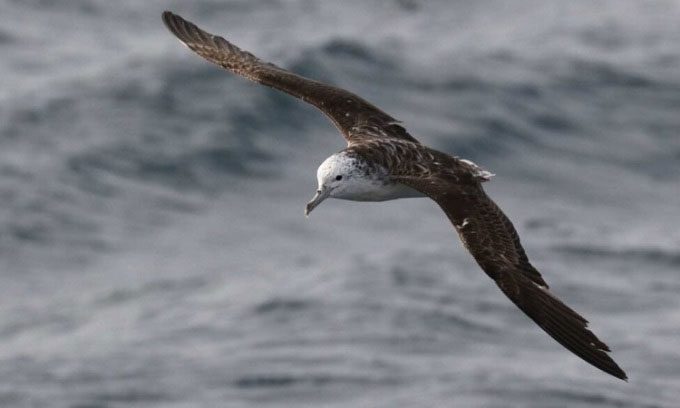White-faced Shearwater (Calonectris leucomelas) nests on offshore islands in Japan and sometimes flies directly into storms passing over the islands.
These shearwaters fly near the eye of the storm for hours at a time, according to a report on October 11 from scientists published in the journal Proceedings of the National Academy of Sciences. This unusual behavior may help the white-faced shearwater survive powerful storms and has not been recorded in any other bird species.

White-faced shearwaters have a unique storm-evading strategy. (Photo: Yusuke Gotto)
Birds and other animals living in areas frequently affected by storms develop strategies to survive deadly weather conditions. In recent years, several studies using GPS tracking devices have revealed that some seabirds, such as the great frigatebird (Fregata minor), will fly large detours to avoid storms. This strategy makes sense for species that spend most of their time at sea and have no place to take shelter, according to Emily Shepard, a behavioral ecologist at Swansea University in Wales. To investigate whether shearwaters avoid storms, Emily and her colleagues used 11 years of GPS tracking data from 75 birds nesting on Awashima Island in Japan.
By combining this information with wind data from storms, the research team found that white-faced shearwaters caught in storms at sea would use wind direction to fly around the edge of the storm. However, birds caught between land and the strong eye of the storm sometimes flew directly into the storm’s center instead of following typical flight patterns.
Among the 75 shearwaters monitored, 13 flew within 60 kilometers of the storm’s eye, the area with the strongest winds, for up to 8 hours. “This was one of those moments when we couldn’t believe what we were seeing. We had some predictions about how they would behave, but none of them were correct,” Emily shared.
When Typhoon Cimaron swept through the Sea of Japan in August 2018, GPS devices tracked the movements of 32 white-faced shearwaters offshore. The tracking data showed that 3 birds flew into the eye of the storm through the strongest winds.
Shearwaters are more likely to head towards the eye of the storm in strong storms, flying at speeds of up to 75 km/h. This suggests they may fly along the eye to avoid being blown onto land, where they risk crashing or colliding with debris, according to Emily.
Although this is the first time this behavior has been recorded in birds, flying with the wind is a common strategy for conserving energy during storms, according to Andrew Farnsworth, an ornithologist at Cornell University.





















































